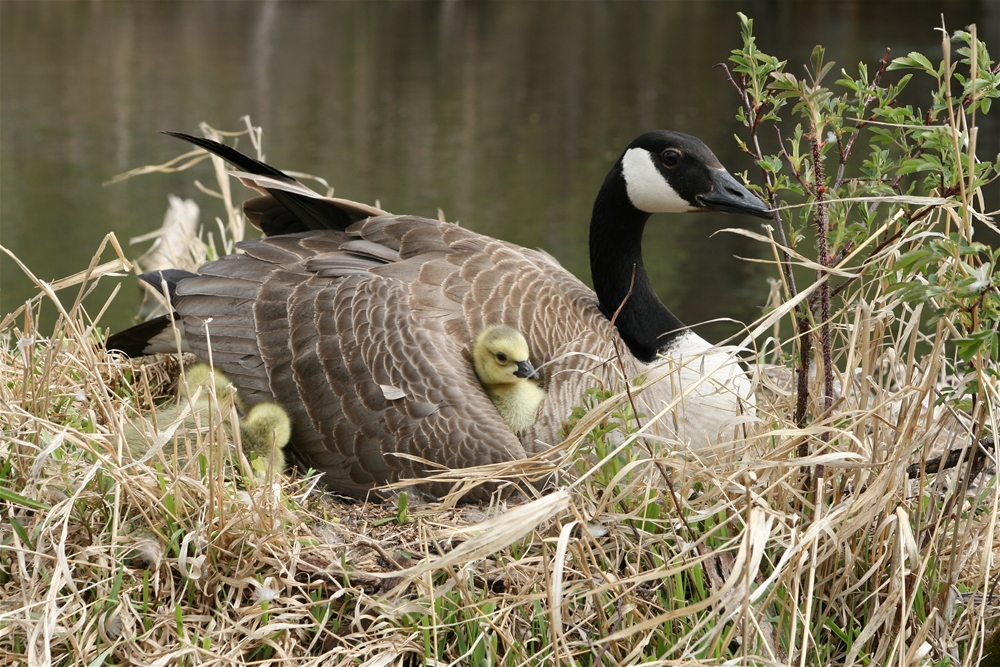
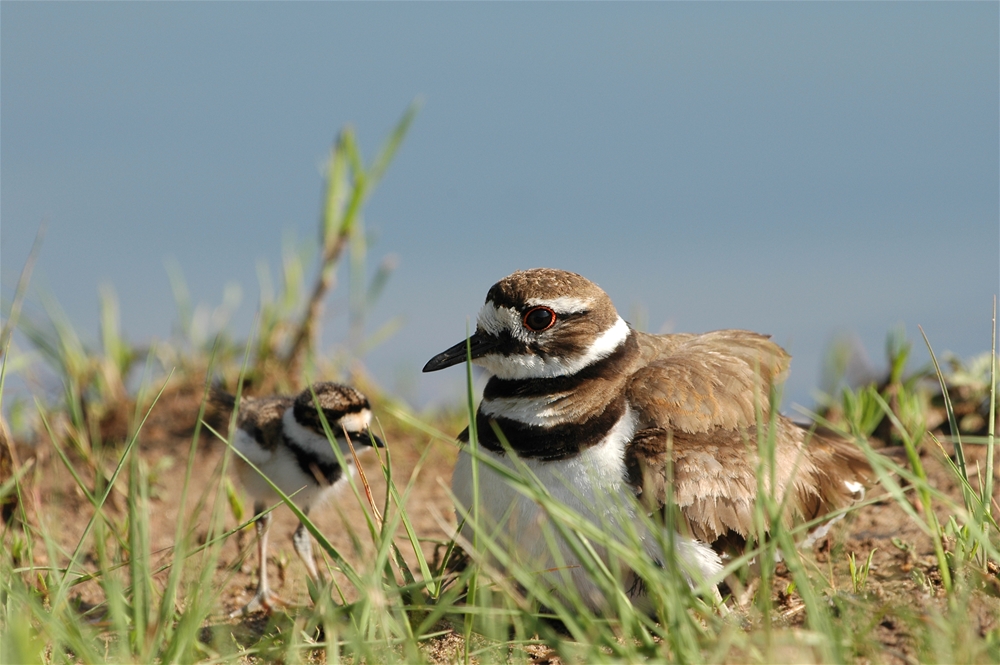
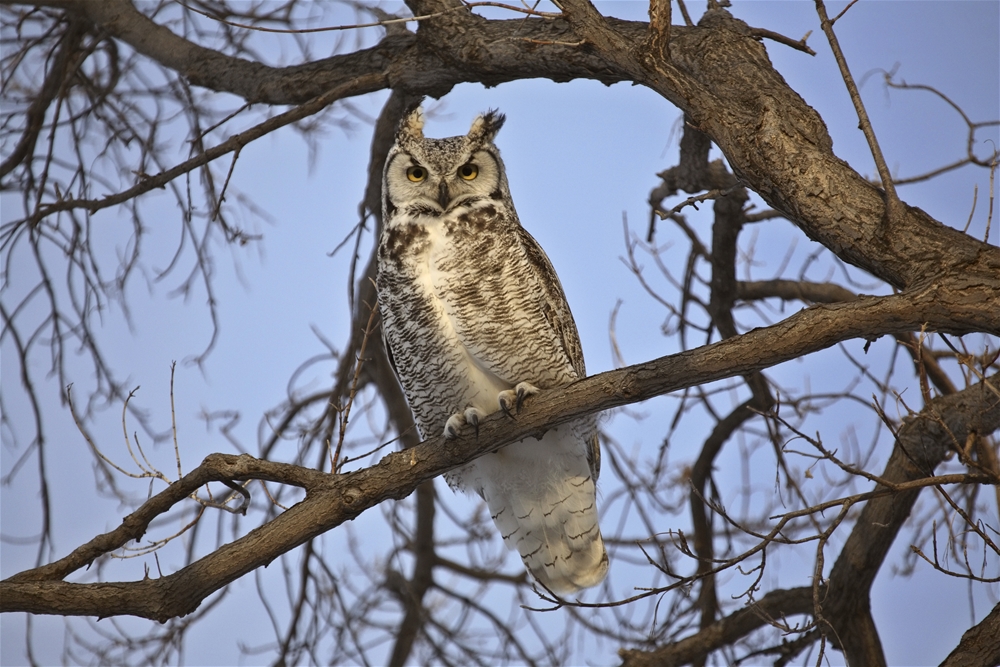
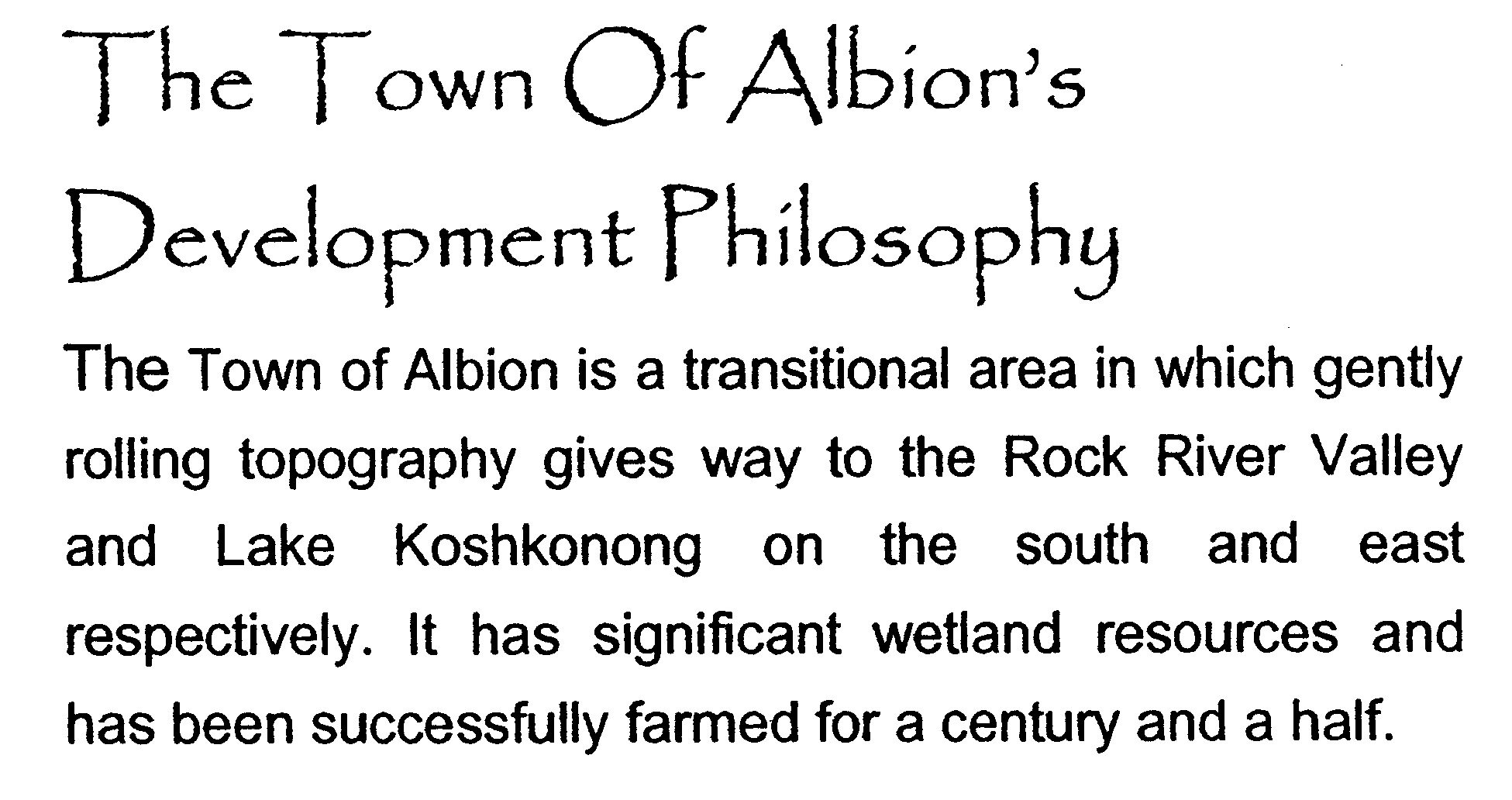
This is how Albion starts out describing itself in the Towns Comprehensive Plan. One of their greatest assests and claims to history is the Albion Academy, where naturalist Thure Kumlien was among the faculty and author Sterling North's canoe paddle is the jewel of the collection of the rebuilt Kumlien Hall which houses the Albion Academy Historical Society. It is sad they they have ignored that rich history of natural resources appreciation as well as the preservation of the Clarke family home whos members were alumni of the Albion Academy and students of Thure Kumlein and whos founding family farm is only 500' from where they approved this mine site.
We hope you enjoy these photos of the beautiful wildlfe. As more and more of their habitat was destroyed by removal of tree lines for corporate farming, we set aside areas of our farm to return to natural habitat for them. We have so enjoyed it as they made our home their new home over the past 28 years. It has been our greatest pleasure to be accepted as trusted friends by these wonderful creatures that grew to know that they were welcome and would never be disturbed again. Our hearts are breaking to know that if this mine is approved, the noise, the smell, the blasting, and the constant activity will force them to search for new refuge.

A Badger made a den on our north parcel on the edge of our wild prairie area that we allowed to return to trees. We loved seeing their footprints since we rarely saw them. They are sensitive to ground vibrations and activity, we are sure they will be gone if this mine moves into an area so close to them.

White Tail Deer bed down in our meadow and around our horse pens at night. I have often enjoy watching them wandering through my backyard in the day.
Great Horned Owls perch on our barns and trees. I will so miss the haunting sounds of their hooting on quiet nights. Owls are very sensitive to loud noise, they will leave if this mine is allowed to proceed.

Monarch butterflies
all day, rare Luna moths at night. We have been so privledged to be able to spend so many hours on warm days and starlite nights enjoying their flight. now we will be prisoners in our homes to escape the noise, dust, and diesel
fumes all day, and the uncontrolled dust at night. If we can't handle it, how can they?
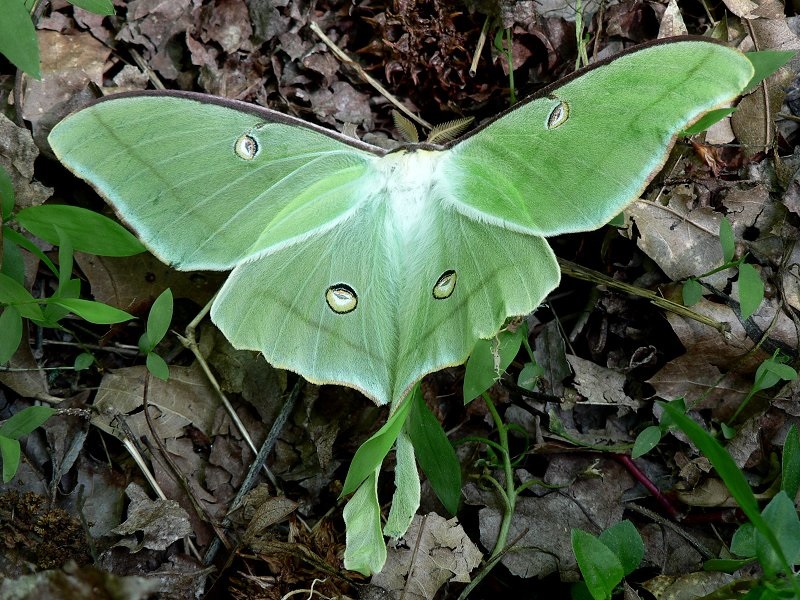
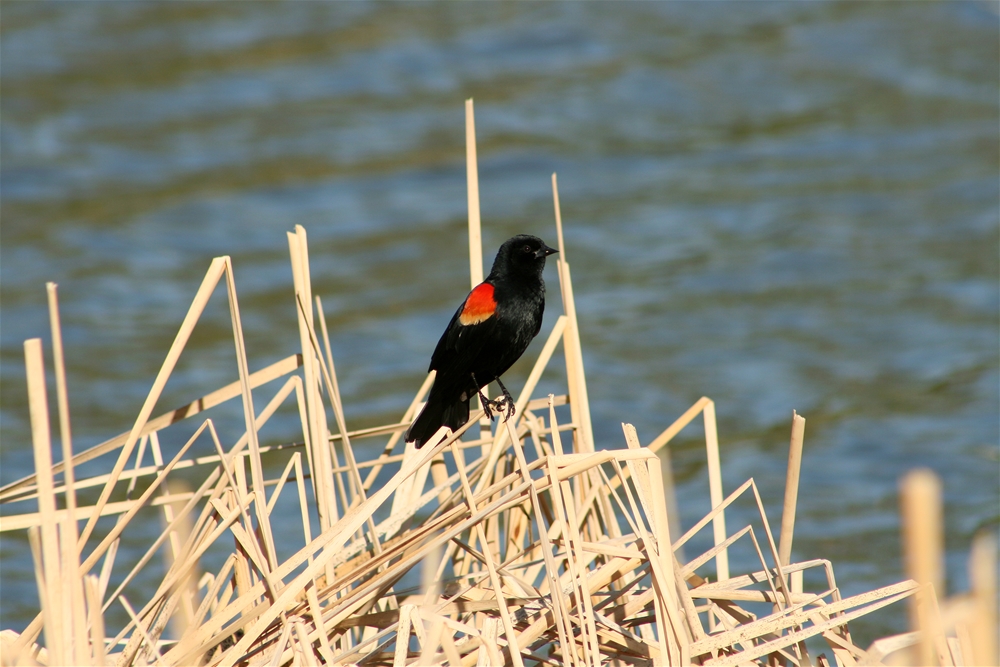

The thing that has brought me almost the most pleasure has been the abundence of Red Wing Blackbirds that I wake to each morning at our farm. They showed up soon after we returned our south east area of our property to natural prairie meadow. Their habitat in the marsh is threatened, but their habitat at our home will be destroyed, they populate the meadow just 300' from the mine road and will be choked by dust, and diesel fumes if they remain, I am sure they won't with 400 trucks passing them each and every day 6 a.m. to 6 p.m. and fromSat. 6 to 2.

It took us 20 years to attract these delicate and whimsical birds to our Trumpet vines, this mine will send them all away.

Just 3 years ago I spotted the first Bald Eagle flying over our farm, gliding over this field on the prairie slope down to the woods on the edge of the wetlands. This past summer I saw three flying the same path together. This same field will now be a 105 acre blasting, choking mine. The trees they perch in and nest are to be torn out, do you think the eagles will stay?
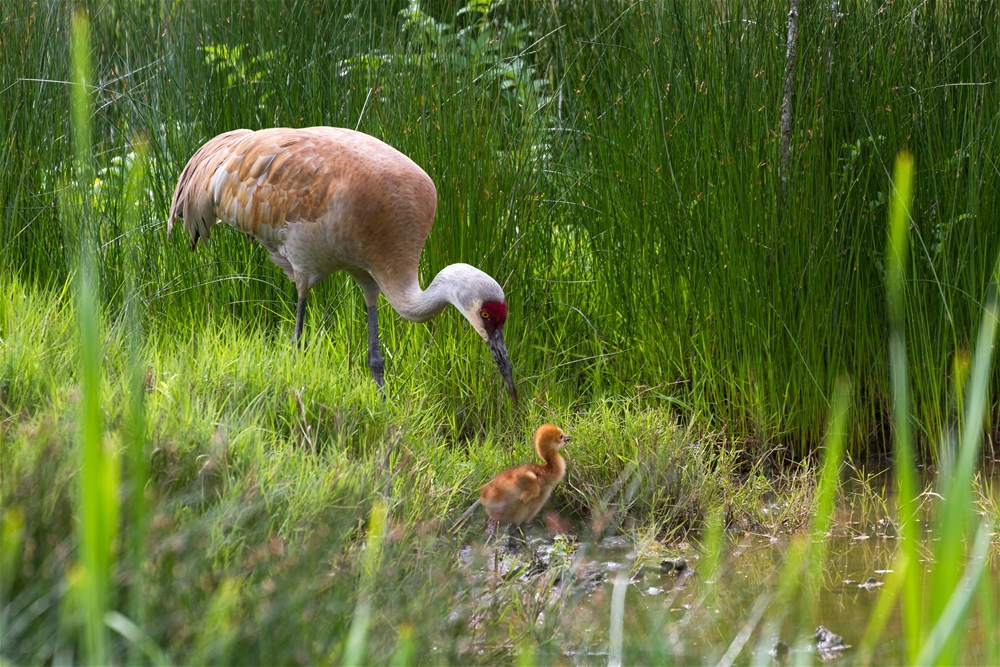
Goofy Sandhill Cranes fly a migration path over our farm on the way to the wetlands where they live and feed, right over the proposed mine site. What a horrible shame.
Killdeers nest all over the ground on our south parcel where we let it go back to nature prairie meadow. I have to watch my step but momma Killdeer always lets me know when I am close, she will always run out and play injured to stir me away from her eggs or chicks. Their home is just 300' away from the mine road, with the ground vibrations, they won't be able to stay.
In the fall, huge flocks of Canadian Geese fly a migration path right over our farm on their way to the wetlands below. If the corn is down, they land in this field right behind our farm and gobble anything that the combines missed. Sadly now their corn field has been approved by Albion to become a dust hole, and the only honking we will here is the traffic that will constantly stall on Hwy 73 from the mine truck traffic. I think they will dine elsewhere.

I love it when a Painted Turtle pays us a visit. They seem to have a historic path from Turtle Lake and thru our farm on the way to the wetlands below, it's seems like quite a long dry trip but they do it just the same, and they stop for a dip in our garden pool, I always leave a branch so they can make it back out. They remind me of my grandfathers annual save the turtle road trips were we would move turtles out of the roads. I don't know how they will get to the wetlands now if this mine is approved, there really isn't another good path for them to get to the marsh, none with a pond.
Thank you all for taking the time to look and hopefully to enjoy what I have been so lucky to have right outside my door for almost three decades. As "city kids" moving here when we were just starting out was like a dream come true. We thought we would be able to stay here our entire lives, living with the beautiful animals and the wonderful plants and those incredible sunsets over the quiet fields. This was more than our home, it was our life, now that may all be gone, for a mine, and just at the time when we were close to be able to realize our dream to retire here in nature.
March 9, 2014
DANE COUNTY ZONING & LAND REGULATION COMMITTEE
City-County Building
Madison, WI
Dear Committee members,
I request that this statement be included in the hearing record regarding CUP #2260 mineral extraction.
I am writing to request that that the Committee deny CUP #2260 because it does not meet the standards of Dane County zoning laws. Further the proposed project may be in violation of the federal Clean Water Act, Bald and Golden Eagle Act, and the Migratory Bird Treaty Act.
I am David Blockstein, Ph.D. I hold a doctorate in ecology from the University of Minnesota and a bachelors of science in wildlife ecology from the University of Wisconsin-Madison. I resided in Madison from 1964-1987 (including time that I studied at the University of Minnesota.) My late mother Liesl Blockstein was an elected member of the Dane County Board of Supervisors until her untimely death in December 1986.
Since 1987, I have primarily been in Washington DC, where I was a Congressional Science Fellow with the Natural Resources and Environment subcommittee of the US House of Representatives (1987-88) and have been working at the interface of environmental science and policy for more than 23 years with the National Council for Science and the Environment, where I am Senior Scientist.
In my professional opinion, the proposed mine has significant potential to damage the immediately adjacent Albion prairie and Albion wetlands, and the wildlife that resides therein.
The Albion prairie and wetland is a rich local ecosystem that contains both wetland plants and wildlife and is part of the Lake Koshkonong watershed. The wetland is a part of a resource protection corridor that was identified in the Albion town plan. Such corridors are critical to providing transit routes for wildlife as well as maintaining the quality of the water downstream.
The importance of wetlands is identified in federal statutes such as the Emergency Wetlands Resources Act of 1986, which states "The Congress finds that —(1) wetlands play an integral role in maintaining the quality of life through material contributions to our national economy, food supply, water supply and quality, flood control, and fish, wildlife, and plant resources, and thus to the health, safety, recreation and economic well-being of all our citizens of the Nation.” (16 USC 3901 SEC. 2).
According to the Dane County Wetlands Resource Management Guide, “Wetlands are among the most complex and least understood of natural community types. Most wetlands also serve multiple functions. One of the
greatest threats to wetlands has been the incremental and piecemeal destruction often described as “death by a thousand cuts.” The loss of wetland resources has become a national problem. Efforts are needed at the local level to protect, restore, and enhance the wetlands that remain, preserving the many benefits which they provide.” http://danedocs.countyofdane.com/webdocs/PDF/capd/Wetland_Guide_web.pdf (page 107)
The paragraph above describes the situation with the Albion wetland. Located in an area with significant agriculture, the wetland is threatened by projects such as the proposed quarry. The quarry, of course, would provide many of the “thousand cuts” leading to the death of the wetland.
Because the proposed quarry site has a significant slope towards the wetland, it is very likely that dust and runoff from the site would enter the immediately adjacent wetland, should the mine be built. Thus, it may be necessary for the mine operators to first apply for a fill permit from the Army Corps of Engineers under Section 404 of the Clean Water Act.
There are frequent sight records of Bald Eagles over the past three years in the area of the proposed mine. It is not known whether the eagles are nesting in the area. Although the Bald Eagle was recently delisted under the Endangered Species Act, it is still protected by the Bald and Golden Eagle Protection Act. This law, originally passed in 1940, provides for the protection of the bald eagle and the golden eagle (as amended in 1962) by prohibiting the take, possession, sale, purchase, barter, offer to sell, purchase or barter, transport, export or import, of any bald or golden eagle, alive or dead, including any part, nest, or egg, unless allowed by permit Bald Eagle sitting in tree (16 U.S.C. 668(a); 50 CFR 22). "Take" includes pursue, shoot, shoot at, poison, wound, kill, capture, trap, collect, molest or disturb (16 U.S.C. 668c; 50 CFR 22.3). If the eagles are nesting in or nearby the area that is proposed to be quarried, the disturbance caused by the mining operation would be considered to be molesting (a “take”), which is a felony under the Act. http://www.fws.gov/midwest/eagle/protect/laws.html
Additionally, the take of all migratory birds, including bald eagles, is governed by the Migratory Birds Treaty Act’s regulations. The Migratory Bird Treaty Act (MBTA) prohibits the taking, killing, possession, transportation, and importation of migratory birds, their eggs, parts, and nests except as authorized under a valid permit (50 CFR 21.11).
The standards of the Dane County zoning laws state:
(h) Standards. No application for a conditional use shall be granted by the town board or zoning committee unless such body shall find that all of the following conditions are present:
1. That the establishment, maintenance or operation of the conditional use will not be detrimental to or endanger the public health, safety, comfort or general welfare;
2. That the uses, values and enjoyment of other property in the neighborhood for purposes already permitted shall be in no foreseeable manner substantially impaired or diminished by establishment, maintenance or operation of the conditional use;
3. That the establishment of the conditional use will not impede the normal and orderly development and improvement of the surrounding property for uses permitted in the district;
4. That adequate utilities, access roads, drainage and other necessary site improvements have been or are being made;
5. That adequate measures have been or will be taken to provide ingress and egress so designed as to minimize traffic congestion in the public streets; and
6. That the conditional use shall conform to all applicable regulations of the district in which it is located.
The risks to the wetlands, wildlife, including Bald Eagle and to the human residents that benefit from them are very likely to violate at least the first two of these standards. The quarry is very likely to substantially impair the Albion wetland and has the potential to damage the protection corridor.
The burden of proof should be on the applicants for the permit. Unless they can show to “courtroom standards” that their proposed use will not violate these standards, it should be the responsibility of this committee to deny the permit.
Thank you very much for your consideration.
David E. Blockstein, Ph.D.
7016 Sycamore Ave. Takoma Park, MD 20912
MARCH 24, 2014 FURTHER DETAILED OBJECTION FROM DR. BLOCKSTEIN
Albion Town Board
Albion, WI
Dear Board members,
I request that this statement be included in the hearing record regarding CUP #2260 mineral extraction.
I am writing to request that that the Board deny CUP #2260 because it does not meet the standards of Dane County zoning laws and of the Albion town plan. It has significant potential to damage the Albion wetland and prairie. Further the proposed project raises concerns related to the federal Clean Water Act, Bald and Golden Eagle Act, and the Migratory Bird Treaty Act.
I submit this further detailed objection to CUP 2260 in addition to my previous letter of objection that was submitted to the zoning committee of the Dane County Board. I appreciate the consideration that was extended by the county zoning committee that the project have a 75' border expansion next to the wetlands, but feel that the buffer zone of '75 feet, or even twice that buffer, is still insufficient to protect the Albion wetland corridor. I submit a more detailed reference to my concerns in my letter as follows.
I am David Blockstein, Ph.D. I hold a doctorate in ecology from the University of Minnesota and a bachelors of science in wildlife ecology from the University of Wisconsin-Madison. I resided in Madison from 1964-1987 (including time that I studied at the University of Minnesota.) My late mother Liesl Blockstein was an elected member of the Dane County Board of Supervisors until her untimely death in December 1986.
Since 1987, I have primarily been in Washington DC, where I was a Congressional Science Fellow with the Natural Resources and Environment subcommittee of the US House of Representatives (1987-88) and have been working at the interface of environmental science and policy for more than 23 years with the National Council for Science and the Environment, where I am Senior Scientist.
Environmental Impacts
In my professional opinion, the proposed mine has significant potential to damage the immediately adjacent Albion prairie and Albion wetlands, and the wildlife that resides therein.
The Albion prairie and wetland is a rich local ecosystem that contains both wetland plants and wildlife and is part of the Lake Koshkonong watershed. The wetland is a part of a resource protection corridor along Saunders Creek that was identified in the Albion town plan. Such corridors are critical to providing transit routes for wildlife as well as maintaining the quality of the water downstream.
The importance of wetlands is identified in federal statutes such as the Emergency Wetlands Resources Act of 1986, which states "The Congress finds that —(1) wetlands play an integral role in maintaining the quality of life through material contributions to our national economy, food supply, water supply and quality, flood control, and fish, wildlife, and plant resources, and thus to the health, safety, recreation and economic well-being of all our citizens of the Nation.” (16 USC 3901 SEC. 2).
According to the Dane County Wetlands Resource Management Guide, “Wetlands are among the most complex and least understood of natural community types. Most wetlands also serve multiple functions. One of the
greatest threats to wetlands has been the incremental and piecemeal destruction often described as “death by a thousand cuts.” The loss of wetland resources has become a national problem. Efforts are needed at the local level to protect, restore, and enhance the wetlands that remain, preserving the many benefits which they provide.” http://danedocs.countyofdane.com/webdocs/PDF/capd/Wetland_Guide_web.pdf (page 107)
The paragraph above describes the situation with the Albion wetland. Located in an area with significant agriculture, the wetland is threatened by projects such as the proposed quarry. The quarry, of course, would provide many of the “thousand cuts” leading to the death of the wetland.
The probable impact of the proposed quarry on the existing wetland is based on simple physics – the law of gravity. Materials and water flow downhill. The wetland and the connected waterways exist where they are because they are in low spots where water from the atmosphere (rain and snow) settles above the surface of the land. This can add to water from below the ground, if the water table is high enough. The land is saturated and a special set of plants and animals inhabits these places of generally high biological productivity - producing ducks, turtles and other animals that we utilize and enjoy. Of course, the wetlands are not isolated from the larger landscape. Some egg-laying species such as ducks and turtles move out to the adjoining uplands, even in agricultural lands, to lay their eggs because if the eggs are water-saturated they will not hatch.
These low spots can also be a repository from materials from the upland. This is particularly the case when the upland is disturbed. This is likely to happen should a quarry be mined directly upstream from the wetlands. Sediment and airborne particles will be deposited in the wetland. This of course degrades the quality of the wetland and also eventually can cause filling of the wetland.
I have read the staff report for CUP #2260 (February 25, 2014) and recognize that the potential conditions to be imposed do include efforts to control dust and erosion for the site. Dust from a mining operation is very difficult to contain, as is runoff.
Also it is my understanding that erosion from the Meinholz quarry site operated by Yahara Minerals has allowed silt to run off from that site in violation of their permit. It is highly possible that this situation could be repeated should you allow a quarry adjacent to the Albion wetlands.
Because the proposed quarry site has a significant slope towards the wetland, it is very likely that dust and runoff from the site would enter the immediately adjacent wetland, should the mine be built. A small buffer zone of 75 or even 150 feet is not likely to be sufficient to protect the wetlands. A strong rain could easily carry dirty water that far despite the proposed measures to minimize erosion.
There is also a question of what will happen when the quarry operators dig deeply enough to hit the water table. The water will interfere with the operations of the quarry. The recommended potential conditions of use state that “no water shall be pumped or otherwise removed from the site.” What are the operators planning to do with that water, which will be contaminated by sediments from the mine? Diligence will be necessary to ensure that this water does not enter the wetland system that leads to Lake Koshkonong.
I have heard that in Milton a proposal for a quarry was denied because it was situated in a similar location – an upland that drains to a wetland.
Geological considerations
The geologic maps for the site indicate that the proposed quarry would be on the Ancell group of minerals (primarily sandstone), the most common formation in Albion. Most of the nearby quarries are located in the Sinnipee group of formations, which are formed of dolomite (limestone), which is the common mineral used in the manufacture of concrete as well as in other aspects of road construction. The Ancell group and the Sinnippee groups are the predominant geological formations in the Albion area. Thus it is not clear that the proposed site is either optimal geologically or unique in the local area. There are alternative sites with the same mineral properties that could be just as if not more suitable.
Legal Aspects
If the mine operators are planning to deposit materials from the mine directly to the wetland, they may need to first apply for a fill permit from the Army Corps of Engineers under Section 404 of the Clean Water Act.
An additional benefit of the current wetland-river-lake system is the frequently sighted Bald Eagles over the past three years over the area, probably including the upland area of the proposed mine. It is not known whether the eagles are nesting in the area that is proposed to be mined.
Although the Bald Eagle was recently delisted under the Endangered Species Act, it is still protected by the Bald and Golden Eagle Protection Act. This law, originally passed in 1940, provides for the protection of the bald eagle and the golden eagle (as amended in 1962) by prohibiting the take, possession, sale, purchase, barter, offer to sell, purchase or barter, transport, export or import, of any bald or golden eagle, alive or dead, including any part, nest, or egg, unless allowed by permit Bald Eagle sitting in tree (16 U.S.C. 668(a); 50 CFR 22). "Take" includes pursue, shoot, shoot at, poison, wound, kill, capture, trap, collect, molest or disturb (16 U.S.C. 668c; 50 CFR 22.3). If the eagles are nesting in or nearby the area that is proposed to be quarried, the disturbance caused by the mining operation would be considered to be molesting (a “take”), which is a felony under the Act. http://www.fws.gov/midwest/eagle/protect/laws.html
Additionally, the take of all migratory birds, including bald eagles, is governed by the Migratory Birds Treaty Act’s regulations. The Migratory Bird Treaty Act (MBTA) prohibits the taking, killing, possession, transportation, and importation of migratory birds, their eggs, parts, and nests except as authorized under a valid permit (50 CFR 21.11).
The standards of the Dane County zoning laws state:
(h) Standards. No application for a conditional use shall be granted by the town board or zoning committee unless such body shall find that all of the following conditions are present:
1. That the establishment, maintenance or operation of the conditional use will not be detrimental to or endanger the public health, safety, comfort or general welfare;
2. That the uses, values and enjoyment of other property in the neighborhood for purposes already permitted shall be in no foreseeable manner substantially impaired or diminished by establishment, maintenance or operation of the conditional use;
3. That the establishment of the conditional use will not impede the normal and orderly development and improvement of the surrounding property for uses permitted in the district;
4. That adequate utilities, access roads, drainage and other necessary site improvements have been or are being made;
5. That adequate measures have been or will be taken to provide ingress and egress so designed as to minimize traffic congestion in the public streets; and
6. That the conditional use shall conform to all applicable regulations of the district in which it is located.
The risks to the wetlands, wildlife, including Bald Eagles and to the human residents that benefit from them are very likely to violate at least the first two of these standards. The quarry is very likely to substantially impair the Albion wetland and has the potential to damage the protection corridor.
The burden of proof should be on the applicants for the permit. Unless they can show to “courtroom standards” that their proposed use will not violate these standards, it should be the responsibility of this committee to deny the permit.
It would not be good for the Town of Albion to approve a Conditional Use Permit only to have it denied by the county. It also would not be good if the mine were approved but then caused damage to the wetland corridor. It would be a more prudent to work with the landowner to locate a potential quarry site in a less sensitive area ecologically– maybe somewhere already zoned for industrial use.
Thank you very much for your consideration.
David
David E. Blockstein, Ph.D.
7016 Sycamore Ave.
Takoma Park, MD 20912,
